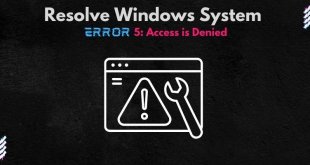Many people have come into contact with electronic signature technology during the pandemic because they’ve been forced to sign documents electronically. Even though it’s just coming into the limelight, it has been around for since the turn of the century.
Electronic signatures, like the name suggests, serve as digital substitutes your real signature. They’re admissible in course and are used by many services such as business formation platforms, law firms, and even to close business deals.
This has its advantages and disadvantages. This article will take a closer look at what an electronic signature is and how it’s going to impact the way we work and play.
What are electronic signatures?
Electronic signatures, also known as e-signatures, are representations of your physical signature and are a legally binding way to get consent on electronic documents and forms. A more formal definition:
An electronic sound, symbol, or process attached to or logically associated with a record…adopted by a person with the intent to sign the record.
The name electronic signature is often used interchangeably with digital signature but these aren’t the same thing. Electronic signature is the umbrella term for all types of `signatures made digitally while digital signatures are a specific type of electronic signature.
If you use an electronic signature creator to type or draw your signature without any additional authentication, it can be used for most documents but not all.
Digital signatures require more authentication, use what’s known as PKI (public key infrastructure), and are often managed by a certificate authority. In the European Union, there are three levels of electronic signature which include basic, Advanced, and Qualified. You can equate the Qualified electronic signature to a digital signature.
Advantages of electronic signatures
Simple to use.
Whether you’re sending out documents or receiving documents, it’s straightforward for the average user to get the hang of it. This leads to documents being signed faster and deals closing in a fraction of a time. By certain estimates, it reduces the time associated with signing documents by up to 40%.
Better accuracy.
It’s relatively common for people to miss pages they need to sign when you have long documents and signatures are required in multiple places. With electronic signature software, there’s a guided signing process and the signee can’t complete the document until all fields have been filled.
Reduced costs.
It can be expensive to travel to in-person meetings to get documents signed. It’s also more expensive to send them via certified mail. There’s also the cost associated with storing your physical documents. With electronic signature software, you’re able to send documents via certified email and remove the costs associated with other forms of document signing.
Disadvantages of electronic Signatures
Yes, electronic signatures come with many
Ongoing costs.
For advanced digital signatures, it requires a certificate for authentication that needs to be renewed regularly. This can be expensive is you have many people at an organization that need to use digital signatures as opposed to electronic signatures.
Security is dependent on the vendor
There are no minimum security standards that an electronic signature vendor needs to adhere too. Each one is in charge of choosing how secure their system is. Additionally, basic electronic signatures don’t have inherent protections against being tampered with like digital signatures.
Has limited options for storage
While many platforms you can use for electronic signatures allow documents to be easily downloaded and ported, some don’t. You’d have to store all your information on their servers indefinitely.
How to prepare for the future
The future waits for no one. If you take a wait and see approach, you may be left behind by competitors that are successfully able to adopt digital transformation.
Even if your organization isn’t ready to use electronic signatures, start researching electronic signature and workflow automation software. Create a shortlist of providers that have the features you think you’ll need.
After you’ve assessed potential solutions, consider where you are in your digital transformation journey. This will help you create guidelines and milestones that will make it easier for individual contributors to get behind your initiatives.
It’s also a good idea to follow reputable sources so you can stay abreast of the most important changes. Don’t spend time creating the documents then store them on a shelf. Instead, go back and update it at regular intervals based on new information and your progress.
Conclusion
Electronic signatures are an eventual evolution in the way we do business. The industry is expected to grow over 20% a year and be worth more than 25 billion dollars. That’s due to an accelerated rate of adoption.
If you’ve not done so already, it’s time to start considering how your organization adapt to this shift.
 free html design Free html design templates
free html design Free html design templates






